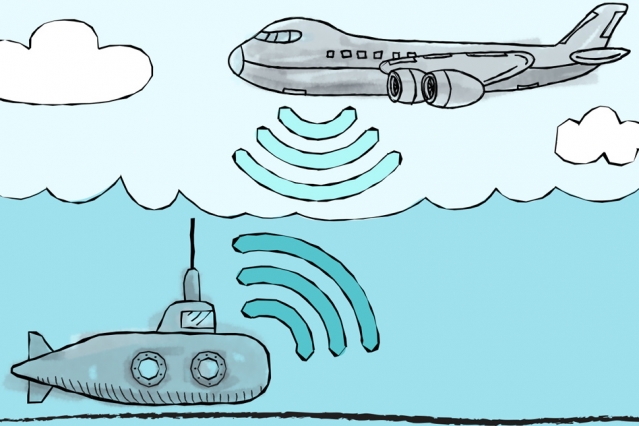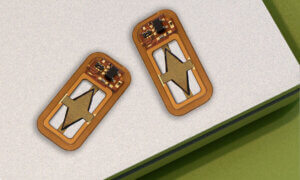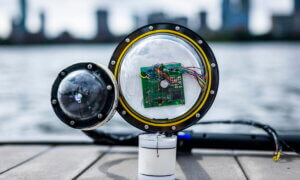Radio signals that travel through air disperse when in water, while acoustic signals sent by underwater devices reflect off the surface. So submarine-to-plane communication has never been successful. But MIT is having none of that.
The MIT Media Lab will offer a paper this week at the SIGCOMM conference in which they’ll present a system designed to tackle this communication problem.
How, you’ll ask? Easy (well, they make it sound easy). An underwater transmitter sends a sonar signal towards the water surface, which causes the smallest of vibrations that translate into the 1s and 0s that are transmitted. Meanwhile, on the surface, an extremely sensitive receiver reads the vibrations, decoding the sonar signal.
Credit: MIT Media Lab
The system is called “translational acoustic-RF communication” (TARF) and it represents a milestone in water-air communications. Though at the time it’s still being tested and improved, in the future it is going to help submarines stay submerged and communicate with airplanes without the need to resurface. The system could also be used on underwater drones to monitor marine life and send data to researchers.
It could also be used on the black boxes of planes. If they go missing, their location could be picked up by sending signals every now and then.
Fadel Adib, assistant professor in the Media Lab and leader of the research said that “Trying to cross the air-water boundary with wireless signals has been an obstacle. Our idea is to transform the obstacle itself into a medium through which to communicate.”
The TARF still has a number of issues to tackle, such as the difficulty to decode signals in waves higher than 16 centimeters. The team also has to figure out how to refine the system so it can function in rough waters.
But all in all, it’s a great breakthrough for MIT. And definitely good news for the turtles out there.
Follow TechTheLead on Google News to get the news first.






















